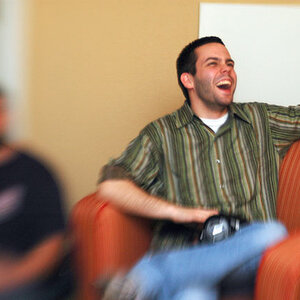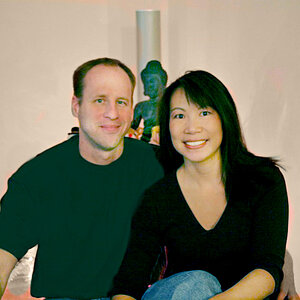mofo83
TPF Noob!
- Joined
- Feb 1, 2013
- Messages
- 9
- Reaction score
- 0
- Location
- Seattle
- Can others edit my Photos
- Photos NOT OK to edit
Hi all,
I just picked up a used Nikon D200 body to replace my beloved Nikon D50.
With my D50, I could almost always trust the autofocus to be spot-on, even hand-held in not-so-ideal light at f/1.8. Whatever I wanted to be in focus was usuallyin focus.
So far, with the D200, I'm noticing that it's much more difficult to take pictures that have the subject in focus when using wide-open apertures. When I review the photos I've taken and "zoom" in on the subject (say, a person's face), more often than not, something a few inches in front or a few inches behind the subject is much sharper, and the face is a little soft.
I'm wondering what might be causing this? Is the D200's autofocus known to be poor in lower light? Am I doing something wrong? Is my new(old) D200 defective?
Just FYI, I have used a blower brush (not the brush, just the blower) to try and clean out the AF area.
Any advice is appreciated. Just trying to make sure this D200 is okay.
Thanks
I just picked up a used Nikon D200 body to replace my beloved Nikon D50.
With my D50, I could almost always trust the autofocus to be spot-on, even hand-held in not-so-ideal light at f/1.8. Whatever I wanted to be in focus was usuallyin focus.
So far, with the D200, I'm noticing that it's much more difficult to take pictures that have the subject in focus when using wide-open apertures. When I review the photos I've taken and "zoom" in on the subject (say, a person's face), more often than not, something a few inches in front or a few inches behind the subject is much sharper, and the face is a little soft.
I'm wondering what might be causing this? Is the D200's autofocus known to be poor in lower light? Am I doing something wrong? Is my new(old) D200 defective?
Just FYI, I have used a blower brush (not the brush, just the blower) to try and clean out the AF area.
Any advice is appreciated. Just trying to make sure this D200 is okay.
Thanks
Last edited:


![[No title]](/data/xfmg/thumbnail/32/32700-18534997be82e5150c566a9e67a00471.jpg?1619735602)


![[No title]](/data/xfmg/thumbnail/39/39444-02925f6d2859f4fda0e89f2001bfc9cd.jpg?1619739034)



![[No title]](/data/xfmg/thumbnail/39/39645-11fae384f9fd2ec2813acc42adec0206.jpg?1619739148)



